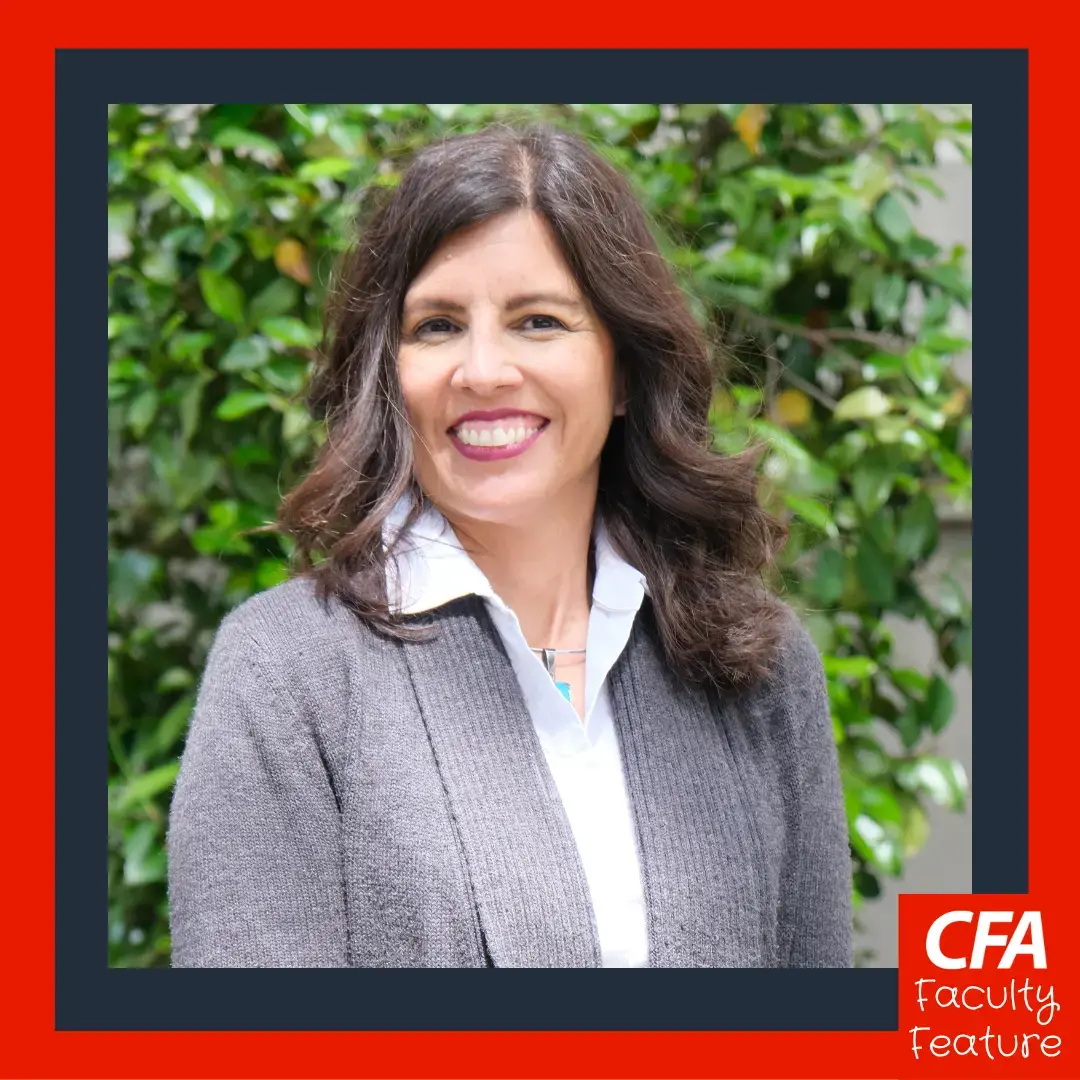Faculty Feature: CFA Chicanx/Latinx Activist Holds on to ‘Audacious Hope’
The death earlier this summer of CFA activist and friend Dr. John Halcon prompted Dr. Margarita Berta-Ávila to reflect on her early years at Sacramento State and finding community with CFA and the CFA Chicanx/Latinx Caucus.
“The movers and shakers that started the caucus were able to foster a space that allowed us to ground and integrate ourselves into the union,” Berta-Ávila reflected.
It started as a space to talk to each other, to be seen and understood when being on campus can often feel hostile and unfamiliar. It spoke to the human need to bond and find comfort, a place of trust and confidence.
“Often, people ask me, ‘how have you stayed so long in academia at Sacramento State?’ and I always say, ‘the union,’ ” said Berta-Ávila. “I knew it was for me. The union aligned with what I felt I had committed to as a Chicana.”

Berta-Ávila came to Sacramento State in 2001 with a strong sense of self. Her political identity emerged as an undergraduate at UC Davis. Berta-Ávila found her people through MEChA and her voice as a budding student organizer.
“I was able to take what I was learning and analyze my context. I started identifying as a Chicana from El Salvador and Peru. I was making a conscious decision that el movimiento (the movement) is what I was going to commit myself to.”
MEChA and community organizing gave her a framework to identify the structural racism inherent in policies that shaped her upbringing and experience in higher education.
“Growing up, there was so much going on that it was difficult to articulate. I didn’t have the language to describe what I or so many experienced. Regardless, you feel it completely. The anger and agitation were always there. I just couldn’t name it,” said Berta-Ávila.
At UC Davis, she found language for the emotions that had been so persistent.
Those experiences still shape her thinking.
As a faculty member, Berta-Ávila’s ongoing reflection and activism made clear that the academy is an archaic institution that wasn’t designed for folks of color to thrive.
“Growing up, there was so much going on that it was difficult to articulate. I didn’t have the language to describe what I or so many experienced. Regardless, you feel it completely. The anger and agitation were always there. I just couldn’t name it.”
– Margarita Berta-Ávila
She saw this most clearly at the bargaining table between CFA and CSU administration.
“Bargaining was one of the hardest experiences I had ever gone through,” said Berta-Ávila. “Just the blatant confrontation, dismissiveness, disrespect, and racism exhibited to your face. It was pervasive every single time we met.”
CSU representatives continuously said “no” to bargaining demands that CFA members believed would elevate faculty working conditions and student learning conditions.
The stress of bargaining pushed Berta-Ávila to be more attentive to her emotional experience.
In debriefs afterward, Berta-Ávila struggled to describe the weight she was carrying. In the comfort of her CFA co-conspirators, she realized she was going into survival mode.
“As a kid, there were different traumas I experienced. To survive, I would switch on the numbness, ‘survival mode.’ I’m not feeling anything. I’m numb. You see my body, but my spirit and my mind are somewhere else,” Berta-Ávila explained.
She noticed that holding that tension was making her stressed and sick. Other Bargaining Team members identified with what she was describing and offered support. Opening up to her colleagues allowed Berta-Ávila to release the tension, to deescalate what felt like an elevated hostile space.
As a younger activist, it wasn’t part of Berta-Ávila’s practice to explore and describe her emotional experience. The attitude was, “who are we to grapple with these feelings and emotions when our community is dealing with all this?” said Berta-Ávila.
That generation of organizers felt privileged for being the few working-class students in a university setting, aspiring for something better. There wasn’t time to feel and complain. There was only urgency.
Working through the indignity of bargaining with CSU administrators, she realized how liberatory it could be to name and process the toxicity of our experiences.
As a union, CFA practices – and continues to improve upon – compassionate accountability to avoid perpetuating and recreating harmful practices.
“We must push ourselves because we need to reimagine what the institution can look like.”
Liberation in practice is a continuous process of reflection and action: praxis.
“What we truly are trying to do to the best of our abilities collectively is disrupt, interrupt, and transform,” said Berta-Ávila. “To do this work, I have to have audacious hope that there can be an alternative.”
In the face of ever-increasing despair and hopelessness locally and globally, Berta-Ávila is anchored in knowing that “hope isn’t something to be promised or aspired. We create hope together as we bind our political vision, collective identity, and strength. To collectively organize is to harvest hope.”
Join California Faculty Association
Join thousands of instructional faculty, librarians, counselors, and coaches to protect academic freedom, faculty rights, safe workplaces, higher education, student learning, and fight for racial and social justice.